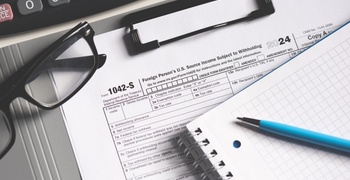How to Improve Both Order Management and Sales Tax Collection
Manually tracking inventory is a labor-intensive endeavor. You have to remember how much inventory you have at each location, how much to reorder, when to reorder, and which vendors to use. Not an easy task. And it’s especially difficult for ecommerce sellers with the added challenge of managing sales taxes based on where they ship their products to.
Out of Order
If you’re using a pen and paper to keep track of your inventory, don’t be surprised if irreplaceable notes get lost or accidentally destroyed. And if you use Excel, don’t expect to be able to automatically enter data into a spreadsheet or easily pull reports.
The solution to these complex problems is to automate as many order management processes as possible and speed up the remaining manual ones. We’ll cover those specific processes in a moment. But first, it’s important to note that advanced order management software not only saves time and improves the accuracy of your inventory data, but it also complements a company’s ability to collect taxes.
Taxing Your Patience
Tax laws are incredibly complex, and they’re changing all the time. Many states have different tax rates on food items, electronics, and other types of products. Five states (Alaska, Delaware, New Hampshire, Montana, and Oregon) currently have no statewide sales taxes. But even those states may have some county and municipal sales taxes that apply to certain purchases.
As noted at the start, ecommerce sellers must deal with the problem of not only accurately accounting for changes to their inventory, but also the various tax laws in play. Brick-and-mortar stores can simply use their local tax rates, but online sellers can’t. If you’re in this situation, what should you do? Simple. Focus on key parts of your order fulfillment process.
Law and Ordering
Organize your warehouse so that products that are often sold together are grouped together and fast-selling are closer to the receiving area for quick movement in and out of storage. Analyze sales data with the help of reports in order to plan for seasonal ups and downs in demand. Cultivate healthy relationships with vendors by negotiating and meeting payment terms and tracking each vendor’s performance over time.
And last but not least, set up automatic reorder points on each of your products and streamline the issuing of sales orders and purchase orders so you’ll know exactly how much inventory is coming in and out of your warehouses. Make sure you do this with an inventory solution that integrates with Avalara. That way, when a purchase order comes in and you generate a sales order, the correct sales tax figures will be instantly populated in it with the help of Avalara’s AvaTax.
Order management and tax collection are hardly a walk in the park, but by using the right tools you can make them much less complex. Fishbowl® integrates with Avalara to improve both your order management and sales tax calculations. So you’ll never let complicated tax laws get in the way of selling online or elsewhere.

The Avalara Tax Changes midyear update is here
Trusted by professionals, this valuable resource simplifies complex topics with clarity and insight.
Stay up to date
Sign up for our free newsletter and stay up to date with the latest tax news.














